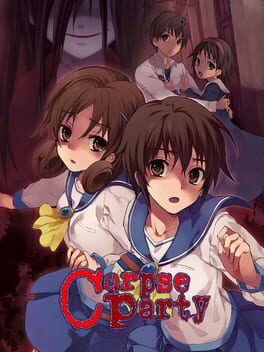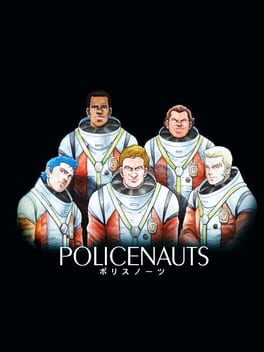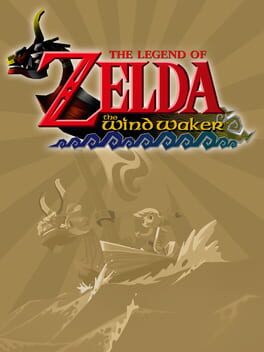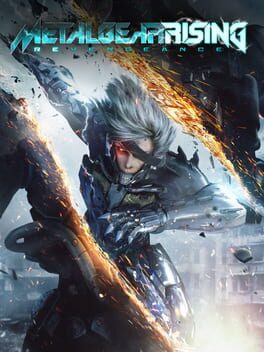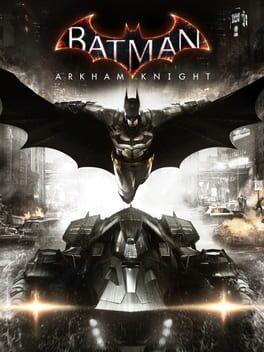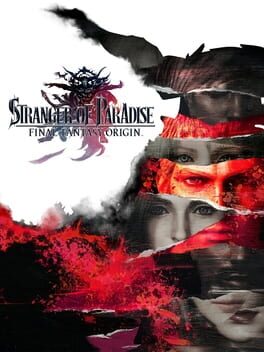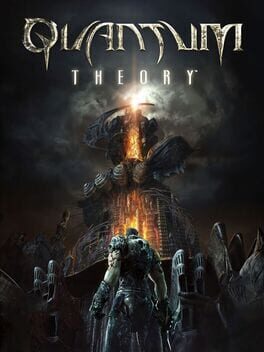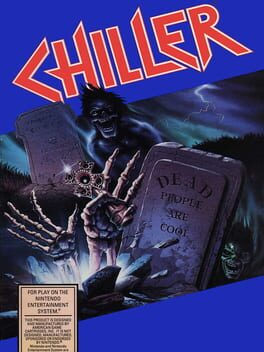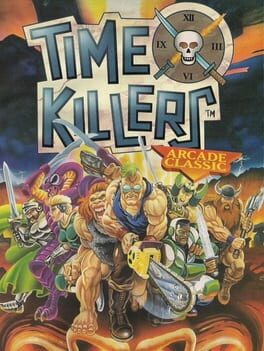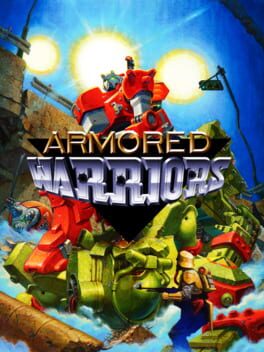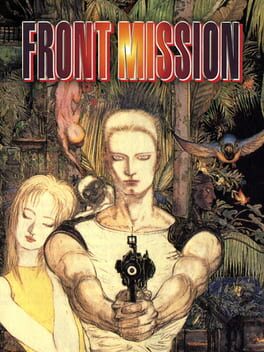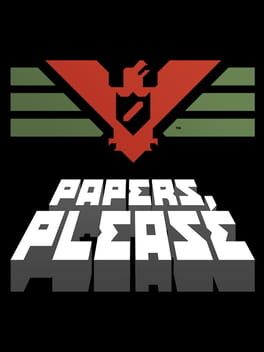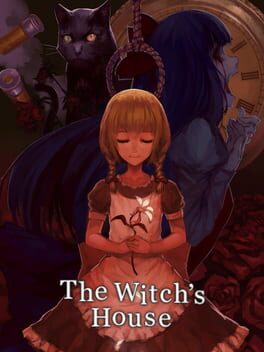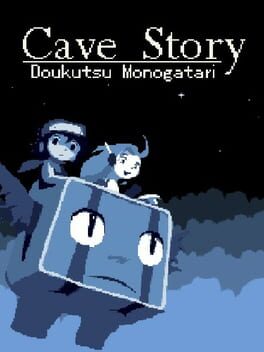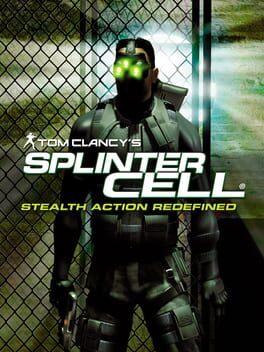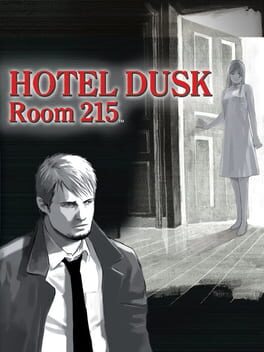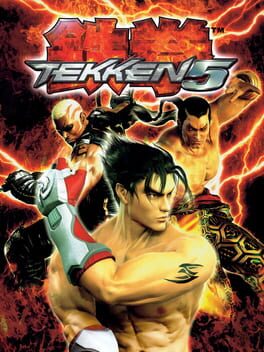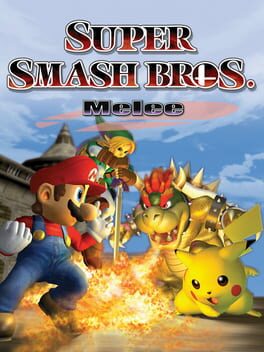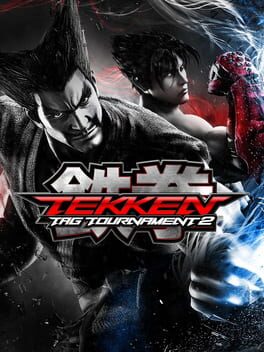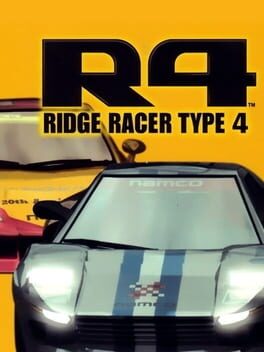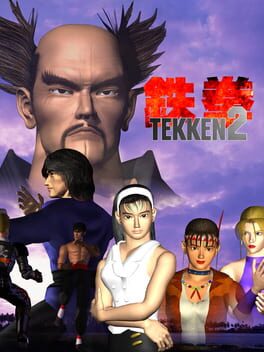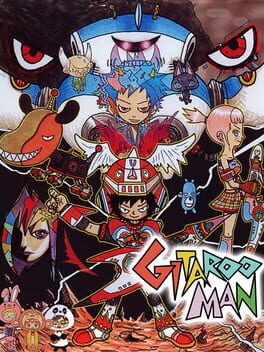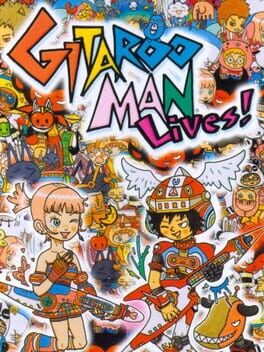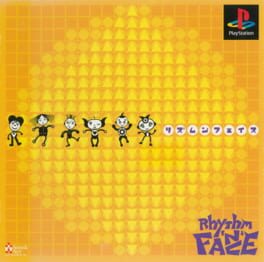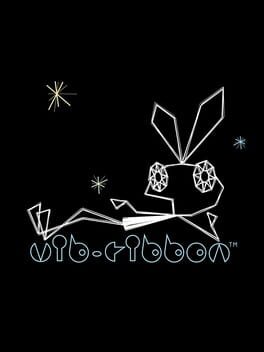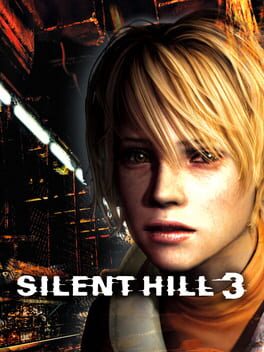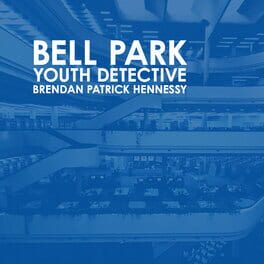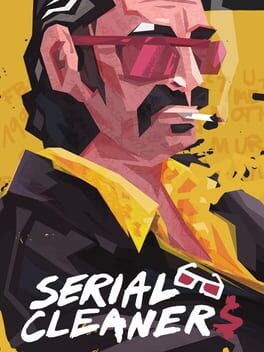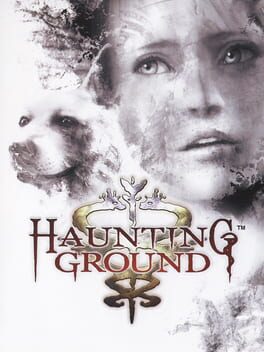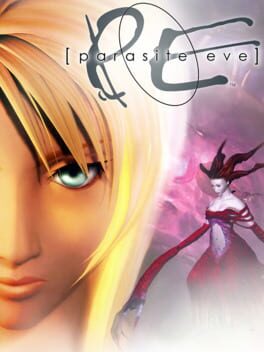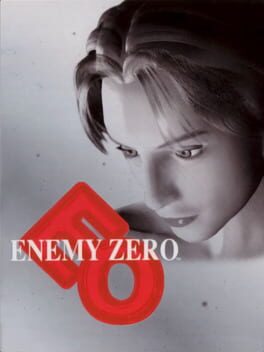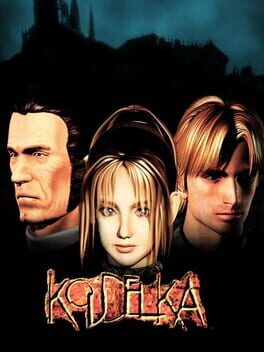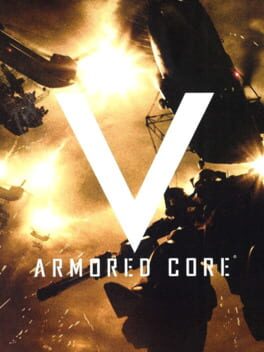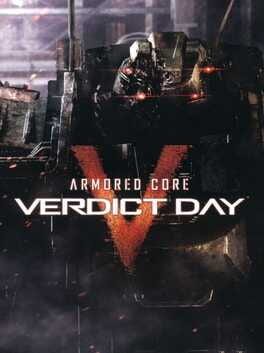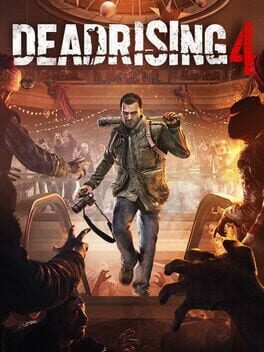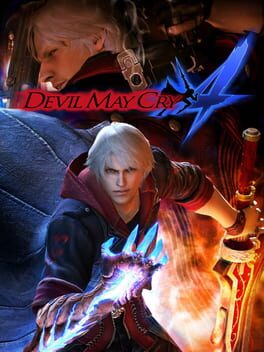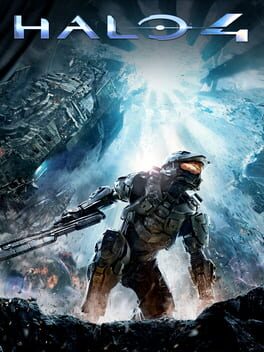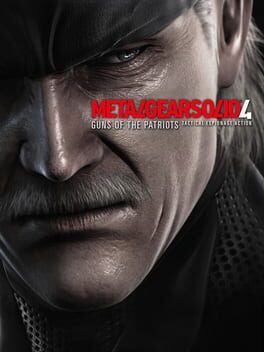polaroidplayboy
503 reviews liked by polaroidplayboy
Dragon's Dogma II
2024
Alpha Protocol
2010
A spy game that has more to it than simply shooting people and sneaking around buildings, succeeding in knowing who’s your ally and who’s an enemy is even more vital than the aforementioned gameplay aspects, and serve to largely influence what happens in the plot as they help in various different ways, be it offering to spike the cocaine of a drug lord so when you have a boss fight with him you completely deny his second phase and he gets knocked out from the spiked coke, pulling the veil away from major plot twists before it’s too late and they bite you in the ass, or unveiling information you can use to your advantage. Speaking of that, information is truly key in this game as you can use whatever character secrets you acquired to influence, blackmail, taunt characters out of hiding and into their death and so on, this game is quite open in how it can be approached as I’m sure many of you have heard before and is easily its strongest feat, even the story missions can be played in different orders which alters some things that happens in them.
As for the shooting and sneaking itself, It is honestly quite over-hated, it’s essentially a more polished up version of Deus Ex in terms of how the RPG aspects intertwine with the shooting aspects but with good enemy feedback, I love the way they react to your bullets, sometimes they stumble over and fall, other times they panic and spray-fire all over the place, it does it’s job well. As for the accuracy, simply focus your points into one or two weapons (preferably pistol as its the best weapon in the game, AR is great too) and don’t spam-fire, wait for the reticle to recover from recoil and you’re good to go, although its best to focus the shots when it comes to pistol, you can fire faster and more accurately with AR, and I recommend having both on you as they suit different needs, you absolutely should stealth some missions and even go through them non-lethally since not every enemy you face can be killed without consequences (civilians, regular cops and other American agents for example). This is overall quite an immersive experience and I heavily recommend it to RPG or Espionage fans.
As for the shooting and sneaking itself, It is honestly quite over-hated, it’s essentially a more polished up version of Deus Ex in terms of how the RPG aspects intertwine with the shooting aspects but with good enemy feedback, I love the way they react to your bullets, sometimes they stumble over and fall, other times they panic and spray-fire all over the place, it does it’s job well. As for the accuracy, simply focus your points into one or two weapons (preferably pistol as its the best weapon in the game, AR is great too) and don’t spam-fire, wait for the reticle to recover from recoil and you’re good to go, although its best to focus the shots when it comes to pistol, you can fire faster and more accurately with AR, and I recommend having both on you as they suit different needs, you absolutely should stealth some missions and even go through them non-lethally since not every enemy you face can be killed without consequences (civilians, regular cops and other American agents for example). This is overall quite an immersive experience and I heavily recommend it to RPG or Espionage fans.
Dragon's Dogma II
2024
Dragons Dogma 2 feels like the world I used to imagine while reading fantasy books as a kid. The cozy open world freedom combined with fantastic combat & an addictive loot/ upgrade system. Going off the deep end in post-game to divine other worldly levels alongside some superb dungeon crawling encounters. It's got a much nicer after taste than other superb but frontloaded RPGs. There’s something about the atmosphere of Dragons Dogma, the perfect darkness, the physical things, such as having to use a lantern after nightfall or getting hit with shock DMG if soaked in water, the wizards and warriors casting a skill for almost 30 seconds straight... it just feels very real & old school. Going on a quest at sundown, surviving a hard fought night, watching the sun come up as you reach the final destination. DD2 might have best magic system in any rpg , prolly the most visually appealing magic in video games, the melee combat is also great. Basically it's a setting I like and the combat seemed like a more appealing dark souls. One of my all time favorites, if not the favorite RPG. The pawn system as a party shtick that I love in stuff like Goblin slayer and berserk & other peak fantasy media. Long hands give + attack range with swords, heavy characters are knocked around less & can pin down enemies (large/small), small characters consume less stamina when climbing enemies, long legs gives +movement speed, etc. so peak. Rant over. Play Dragonsdogma
Corpse Party
2011
Policenauts
1994
I have put maybe an hour or two into Silent Hill 2, and I know it's a game that I need to finish at some point. I know the great twist, I've had that spoiled for me god knows how many times. I honestly put it into the same camp that I have movies like Alien in: even if there's something in there that surprises me, having the big moments ripped off like a band-aid purely through pop culture osmosis dampers my curiosity somewhat. All of this is to say, while you may not personally be excited for new Silent Hill games, I'm just curious to see something new. Since I was only really around for P.T. once that was spoiled for me, too, I'm not counting it—which leaves me with the newly released The Short Message.
I did not get the hate that this got over its leaks, and having finally played it, I still don't. Having seen those leaks, I actually have more of an appreciation for this; I know now that this was pretty cohesive in its themes and intention when it needed it to be and never deviated from that. I don't mind a lack of subtlety, as long as the bluntness of what you're working on is there for a good reason, and I found the reasoning for it here to be acceptable. It's laser-focused on what it wants and needs to say from beginning to end, and this focus is echoed throughout the spaces you explore. Although I can see someone being a little irritated that this is linear to the point where doors don't unlock unless you read certain notes, most of those notes serve the story and not the lore. There are notes that serve the lore, but they all feed you the right amount of information while giving you space to think. What impressed me on an immediate level were the cinematics. I genuinely can't tell if they were live-action or rendered, although I know that they were likely rendered. It's uncanny as hell, but it's equally impressive. What impressed me throughout, however, is how well this serves as a mood piece. Each and every location, whether it was important or minor, made me feel something. This is more of a vibes game than something substantive or scary, and while that might be disappointing if you're going in expecting serious scares, it kept me hooked. One concern I do have, if this is the playable teaser many are making it out to be, is that the only area where I noticed evident performance issues was when I was near fog. If the new Silent Hill games are all going to lack the fog or run like shit because of it, we might be in for a doozy. But regardless of that one scene, the rest of this was pretty solid! ...for the most part.
Yeah, those chase scenes, man. I'm a little biased because I already don't like chase scenes, but something about them here felt either like filler or downright infuriating to deal with. If it weren't for the last chase sequence, my rating for this would absolutely be three-and-a-half stars because the vibes were just that immaculate for me. But no, god, no. I don't know if I ever want to go through that again. Put it this way: the game doesn't make a big deal about which rooms you go into because of its linear trajectory until the final chase sequence, where it expects you to remember the layout of the map like the back of your hand while elements of it feel completely different. It expects you to find five photographs in this mess without giving you a map or checkpoints. At a certain point, the stress I was intended to feel gave way to frustration. The only reason I didn't stop playing there was because I wanted to see the ending. That was it. The ending was nice, and there was a cute little tune that played over the credits (way more people worked on this than any other free game I've ever played), but I don't think that forgives it. It was that bad. At least the creature design was cool, though—although I found it to be scarier in the leaked concept art than I did in the final product. Consequences of having that kind of stuff leak, I guess. Whoops! Feel bad for the developers on that front, because I'm probably not alone in that.
What I liked about this, I really liked. If a new Silent Hill game is made from this mold, I wouldn't mind, actually. The Silent Hill 2 remake being a horror game that needs to have a trailer dedicated to its combat should say something about how skeptical I am of that, but I might also check it out when it's on sale. If this and that trailer is Konami's way of getting people back on the Silent Hill hype train... I mean, I wouldn't call this embarrassing. This was cool. But, 7/10.
I did not get the hate that this got over its leaks, and having finally played it, I still don't. Having seen those leaks, I actually have more of an appreciation for this; I know now that this was pretty cohesive in its themes and intention when it needed it to be and never deviated from that. I don't mind a lack of subtlety, as long as the bluntness of what you're working on is there for a good reason, and I found the reasoning for it here to be acceptable. It's laser-focused on what it wants and needs to say from beginning to end, and this focus is echoed throughout the spaces you explore. Although I can see someone being a little irritated that this is linear to the point where doors don't unlock unless you read certain notes, most of those notes serve the story and not the lore. There are notes that serve the lore, but they all feed you the right amount of information while giving you space to think. What impressed me on an immediate level were the cinematics. I genuinely can't tell if they were live-action or rendered, although I know that they were likely rendered. It's uncanny as hell, but it's equally impressive. What impressed me throughout, however, is how well this serves as a mood piece. Each and every location, whether it was important or minor, made me feel something. This is more of a vibes game than something substantive or scary, and while that might be disappointing if you're going in expecting serious scares, it kept me hooked. One concern I do have, if this is the playable teaser many are making it out to be, is that the only area where I noticed evident performance issues was when I was near fog. If the new Silent Hill games are all going to lack the fog or run like shit because of it, we might be in for a doozy. But regardless of that one scene, the rest of this was pretty solid! ...for the most part.
Yeah, those chase scenes, man. I'm a little biased because I already don't like chase scenes, but something about them here felt either like filler or downright infuriating to deal with. If it weren't for the last chase sequence, my rating for this would absolutely be three-and-a-half stars because the vibes were just that immaculate for me. But no, god, no. I don't know if I ever want to go through that again. Put it this way: the game doesn't make a big deal about which rooms you go into because of its linear trajectory until the final chase sequence, where it expects you to remember the layout of the map like the back of your hand while elements of it feel completely different. It expects you to find five photographs in this mess without giving you a map or checkpoints. At a certain point, the stress I was intended to feel gave way to frustration. The only reason I didn't stop playing there was because I wanted to see the ending. That was it. The ending was nice, and there was a cute little tune that played over the credits (way more people worked on this than any other free game I've ever played), but I don't think that forgives it. It was that bad. At least the creature design was cool, though—although I found it to be scarier in the leaked concept art than I did in the final product. Consequences of having that kind of stuff leak, I guess. Whoops! Feel bad for the developers on that front, because I'm probably not alone in that.
What I liked about this, I really liked. If a new Silent Hill game is made from this mold, I wouldn't mind, actually. The Silent Hill 2 remake being a horror game that needs to have a trailer dedicated to its combat should say something about how skeptical I am of that, but I might also check it out when it's on sale. If this and that trailer is Konami's way of getting people back on the Silent Hill hype train... I mean, I wouldn't call this embarrassing. This was cool. But, 7/10.
Lies of P
2023
The Last Guardian
2016
There seems to be a prevalent expectation that as games evolved, they also became exponentially more approachable. Higher budgets resulted in smoother graphics and fewer bugs. More complex controls (adding left/right triggers, then adding one/two joysticks, then dabbling with motion inputs, etc) gave players a firmer grasp over their characters. AI became more predictable as their algorithms became more intricate to capture a wider range of responses. In a sense, as the technology expanded, the resulting products seemingly became more streamlined to better suit the player’s needs while more thoroughly capturing a developer’s vision.
Team Ico has never been about following tradition, however. If anything, the evolution of their titles embodies the regression of player control, choosing to instead utilize technological advancements not just to refine its premise via "design by subtraction" as chump has pointed out, but to deliver an entirely new experience altogether. Ico was a classic tale of boy meets girl; the girl had to be freed from her cage and pulled around the castle, as the boy protected her against everything in her way to prevent her demise. Shadow of the Colossus, however, was a story concerned with the struggle over control. The lone wanderer, in his quest to revive Mono, hunts down various several-story colossi capable of swatting him about like a fly. In the resulting desperate dance of death, he at first struggles to climb their hulking figures, hanging on for dear life until he discovers their weak points and stabs the colossi while they helplessly flail about. In other words, it's a game about trying to regain any semblance of control until you realize after the fact that the only shadow left was the literal shadow cast by Wander over their fallen corpse.
The Last Guardian then, can be thought of as the natural evolution of Team Ico titles, in that it melds previous design sensibilities and thrives off of disempowering the player throughout its entirety. Trico, the player’s companion and a cross between cat and bird, is essentially the analog to Wander’s horse in Shadow of the Colossus, Agro. Fumito Ueda designed Agro as a companion rather than just a vehicle, and had his team develop specific movement algorithms that would allow Agro to steer herself without the player’s explicit control, forcing players to put their trust in their steed during certain fights emphasizing bow aiming. Ueda and his new team at GenDesign iterated upon this idea, explicitly creating environments where the player was forced to rely upon Trico’s actions to progress and thus establish dependency between the boy and his companion.
While the game can be thought of as an inversion of Ico in this sense, its design influence upon The Last Guardian should not go overlooked, particularly in how the game captures Ico’s physicality. Ico’s key strength was establishing a sense of presence through minimalist puzzles that lacked overly gamey elements, namely in how Ico interacted with his surroundings. Players are subtly guided into climbing chains, pulling levers, sitting on stone sofas to save, and most importantly, holding down R1 to hold Yorda by the hand around the castle and pull her out of danger whenever captured. The Last Guardian innovates upon this by combining several of the traversable elements and the companion into one. To better navigate the vast ruins, the boy must guide Trico and utilize their tall body of climbable feathers in order to scale heights, while occasionally dragging around their large tail and dangling it over ledges to safely climb down. Most importantly, you get to pet Trico whenever you feel like it to comfort your friend in both their happiest and most emotionally taxing moments. In both Ico and The Last Guardian, the player’s constant contact with both the environment and their companion keeps them firmly rooted within its constructed sense of reality by regularly reminding them of their companion’s physical presence.
This physicality would not be as significant without the lessons learned from Shadow of the Colossus however, not just regarding AI behavior but also specifically in how it adapts the game’s sense of scale. Trico is large, and the boy is small. As mentioned previously, Trico can utilize their size to lean against walls and give the boy a step up, but they can also utilize their weight to hold down large chains and swipe away at imposing bodies of armor. Meanwhile, the boy is much more agile and can fit into otherwise inaccessible small spaces by Trico, squeezing through narrow tunnels and gaps in metal gates to pull switches and let his partner through. This obvious difference in size creates consistent room for contrast, not just in how the two characters differ in terms of functionality but also in terms of their scale when measured against the traversed liminal spaces of the ruins, constantly transforming from immense empty rooms to constrained and suffocating tunnels and corridors.
What is particularly interesting is not just The Last Guardian’s disempowerment or sense of scale, but rather what it manages to achieve with said elements and the resulting contrast to establish interdependency between the two characters and solidify their relationship. The combat, an almost complete inverse of Ico’s combat, is the most obvious example. Rather than defending Yorda by whacking shadow enemies with a stick, the roles have been reversed, in that the player must rely upon Trico to guard against scores of possessed armor as to avoid getting kidnapped himself. Even so, the game plays around with this idea of vulnerability, shifting the onus of responsibility about as the boy often finds himself in positions where he must actively support or protect Trico, such as disposing of glass eyes that scare his friend or scrambling to pull a nearby switch to lower a bridge and give Trico room to climb up to safety. The game is even willing to occasionally break its own rules to demonstrate how this sense of caring evolves past its defined guidelines. In almost any other game, this mechanical inconsistency would be regarded as a flaw, but it is this sense of doubt that creates room for the relationship to build from in the first place, and is perhaps the game’s most understated strength.
This is not to say that The Last Guardian was bereft of limitations regarding the execution of its ambitious scope. The most pressing challenge that Ueda and his team faced was how to balance its constructed sense of reality with regards to player expectations; that is, it had to find meaningful ways to commit to its vision of establishing the relationship between the boy and Trico while also acknowledging and appeasing players that would otherwise get lost or frustrated. Perhaps the most obvious downgrade from Ico is the presence of constant button prompts appearing on-screen to alert the players on how to better control the boy and instruct Trico; while the frequency of the prompts lessens over time, it is a slight disappointment that the game doesn’t simply force the players to experiment with inputs and commands as a more subtle and trusting substitute. This downfall however, is an anomaly amongst The Last Guardian’s other shortcomings, as it manages to successfully disguise many of its other concessions and limitations. There’s a classic “escape from the collapsing structure” sequence where all you do is hold forward and jump, but the game gets away with it because the player is used to being framed as a helpless participant. There’s occasional voice-over dialogue hints whenever the player has been stuck for a while in the same area, but it feels far less intrusive than Dormin’s repeated and booming hints in Shadow of the Colossus because the game has already established itself as a retrospective re-telling from the now grown boy’s point of view. Trico doesn’t respond immediately to the boy’s commands when being told where to go, but it makes sense that they wouldn’t function like clockwork and would need time to spot and process the situation from their own point of view, so the lag in response feels justified. It doesn’t matter that certain isolated elements of the game would crumble under scrutiny. What matters is that the situational context to allow players to suspend their disbelief is almost always present; in other words, the illusion holds up.
I’m still learning more about the game to this day. There are so many little details that I wouldn’t have spotted upon a first playthrough, and it’s an absolute joy finally getting to gush upon spotting them in replays. Of course it makes sense that you can’t just issue specific commands to Trico at the very start as a sequence-break despite not being taught by the game; after all, Trico hasn’t had time to observe you and mimic your actions to carry out such commands. Of course the hostile creatures that look exactly like your friend behave similarly; how can you then use your preconceived knowledge of their physiology to aid your friend in a fight against their copycat? I also can’t help but appreciate how GenDesign condensed so much learning within its introduction; in the first ten minutes alone, you’re hinted on how to later deal with the bodies of armor (the magical runes that appear before waking up are the exact same as the runes that appear when grabbed, and are dispelled in the same manner of furiously mashing buttons), you get to figure out how Trico’s eyes change colors depending upon whether they’re mesmerized or hostile, and it quickly establishes the premise of building up trust with a very wary creature that’s more than likely to misunderstand or ignore you at first. Combine all of these nuances with the game’s ability to destabilize and diversify playthroughs via Trico’s innate curiosity and semi-unpredictable instincts, and you get a game that becomes easier to appreciate the more the player familiarizes themselves with its inner workings.
I think a lot of criticism for The Last Guardian ultimately comes down to less of what we perceive the game is and more of what we perceive the game isn’t. It’s not a fully player-controlled puzzle-platforming game like Ico, it’s not a puzzle-combat game with spectacle like Shadow of the Colossus, and it’s certainly not a classic companion escort-quest game where you can just order Trico around like a robot and expect automatic results every time. Instead of focusing on the progression of more complex controls and puzzles, The Last Guardian is focused on the progression of a seemingly more complex relationship. I’m not going to pretend that everyone will get something out of this game, as it definitely requires a good deal of patience and player investment to meet the game halfway. It’s certainly more difficult to appreciate given its lack of influence unlike Ico or its lack of exhilarating boss encounters unlike Shadow of the Colossus. That said, it’s this element of danger in its ability to commit to its vision while alienating impatient players that makes it such a compelling title once it finally clicks. Many before me have pointed out how powerful the bond between the player and Trico felt upon learning from others that improperly caring for Trico results in your companion stubbornly ignoring the player’s commands; after all, volume swells cannot exist without contrast to provide room for growth. Perhaps this is why at the end of the day, I find myself transfixed by every word that Fumito Ueda has to offer. In an era where developers feel overly concerned with the best and brightest, he doesn’t seem concerned about what video games mean so much as what video games are. I can only hope that someday, he and GenDesign will return to bring us a new title that captures our imagination as thoroughly as many of his works already have for me.
Team Ico has never been about following tradition, however. If anything, the evolution of their titles embodies the regression of player control, choosing to instead utilize technological advancements not just to refine its premise via "design by subtraction" as chump has pointed out, but to deliver an entirely new experience altogether. Ico was a classic tale of boy meets girl; the girl had to be freed from her cage and pulled around the castle, as the boy protected her against everything in her way to prevent her demise. Shadow of the Colossus, however, was a story concerned with the struggle over control. The lone wanderer, in his quest to revive Mono, hunts down various several-story colossi capable of swatting him about like a fly. In the resulting desperate dance of death, he at first struggles to climb their hulking figures, hanging on for dear life until he discovers their weak points and stabs the colossi while they helplessly flail about. In other words, it's a game about trying to regain any semblance of control until you realize after the fact that the only shadow left was the literal shadow cast by Wander over their fallen corpse.
The Last Guardian then, can be thought of as the natural evolution of Team Ico titles, in that it melds previous design sensibilities and thrives off of disempowering the player throughout its entirety. Trico, the player’s companion and a cross between cat and bird, is essentially the analog to Wander’s horse in Shadow of the Colossus, Agro. Fumito Ueda designed Agro as a companion rather than just a vehicle, and had his team develop specific movement algorithms that would allow Agro to steer herself without the player’s explicit control, forcing players to put their trust in their steed during certain fights emphasizing bow aiming. Ueda and his new team at GenDesign iterated upon this idea, explicitly creating environments where the player was forced to rely upon Trico’s actions to progress and thus establish dependency between the boy and his companion.
While the game can be thought of as an inversion of Ico in this sense, its design influence upon The Last Guardian should not go overlooked, particularly in how the game captures Ico’s physicality. Ico’s key strength was establishing a sense of presence through minimalist puzzles that lacked overly gamey elements, namely in how Ico interacted with his surroundings. Players are subtly guided into climbing chains, pulling levers, sitting on stone sofas to save, and most importantly, holding down R1 to hold Yorda by the hand around the castle and pull her out of danger whenever captured. The Last Guardian innovates upon this by combining several of the traversable elements and the companion into one. To better navigate the vast ruins, the boy must guide Trico and utilize their tall body of climbable feathers in order to scale heights, while occasionally dragging around their large tail and dangling it over ledges to safely climb down. Most importantly, you get to pet Trico whenever you feel like it to comfort your friend in both their happiest and most emotionally taxing moments. In both Ico and The Last Guardian, the player’s constant contact with both the environment and their companion keeps them firmly rooted within its constructed sense of reality by regularly reminding them of their companion’s physical presence.
This physicality would not be as significant without the lessons learned from Shadow of the Colossus however, not just regarding AI behavior but also specifically in how it adapts the game’s sense of scale. Trico is large, and the boy is small. As mentioned previously, Trico can utilize their size to lean against walls and give the boy a step up, but they can also utilize their weight to hold down large chains and swipe away at imposing bodies of armor. Meanwhile, the boy is much more agile and can fit into otherwise inaccessible small spaces by Trico, squeezing through narrow tunnels and gaps in metal gates to pull switches and let his partner through. This obvious difference in size creates consistent room for contrast, not just in how the two characters differ in terms of functionality but also in terms of their scale when measured against the traversed liminal spaces of the ruins, constantly transforming from immense empty rooms to constrained and suffocating tunnels and corridors.
What is particularly interesting is not just The Last Guardian’s disempowerment or sense of scale, but rather what it manages to achieve with said elements and the resulting contrast to establish interdependency between the two characters and solidify their relationship. The combat, an almost complete inverse of Ico’s combat, is the most obvious example. Rather than defending Yorda by whacking shadow enemies with a stick, the roles have been reversed, in that the player must rely upon Trico to guard against scores of possessed armor as to avoid getting kidnapped himself. Even so, the game plays around with this idea of vulnerability, shifting the onus of responsibility about as the boy often finds himself in positions where he must actively support or protect Trico, such as disposing of glass eyes that scare his friend or scrambling to pull a nearby switch to lower a bridge and give Trico room to climb up to safety. The game is even willing to occasionally break its own rules to demonstrate how this sense of caring evolves past its defined guidelines. In almost any other game, this mechanical inconsistency would be regarded as a flaw, but it is this sense of doubt that creates room for the relationship to build from in the first place, and is perhaps the game’s most understated strength.
This is not to say that The Last Guardian was bereft of limitations regarding the execution of its ambitious scope. The most pressing challenge that Ueda and his team faced was how to balance its constructed sense of reality with regards to player expectations; that is, it had to find meaningful ways to commit to its vision of establishing the relationship between the boy and Trico while also acknowledging and appeasing players that would otherwise get lost or frustrated. Perhaps the most obvious downgrade from Ico is the presence of constant button prompts appearing on-screen to alert the players on how to better control the boy and instruct Trico; while the frequency of the prompts lessens over time, it is a slight disappointment that the game doesn’t simply force the players to experiment with inputs and commands as a more subtle and trusting substitute. This downfall however, is an anomaly amongst The Last Guardian’s other shortcomings, as it manages to successfully disguise many of its other concessions and limitations. There’s a classic “escape from the collapsing structure” sequence where all you do is hold forward and jump, but the game gets away with it because the player is used to being framed as a helpless participant. There’s occasional voice-over dialogue hints whenever the player has been stuck for a while in the same area, but it feels far less intrusive than Dormin’s repeated and booming hints in Shadow of the Colossus because the game has already established itself as a retrospective re-telling from the now grown boy’s point of view. Trico doesn’t respond immediately to the boy’s commands when being told where to go, but it makes sense that they wouldn’t function like clockwork and would need time to spot and process the situation from their own point of view, so the lag in response feels justified. It doesn’t matter that certain isolated elements of the game would crumble under scrutiny. What matters is that the situational context to allow players to suspend their disbelief is almost always present; in other words, the illusion holds up.
I’m still learning more about the game to this day. There are so many little details that I wouldn’t have spotted upon a first playthrough, and it’s an absolute joy finally getting to gush upon spotting them in replays. Of course it makes sense that you can’t just issue specific commands to Trico at the very start as a sequence-break despite not being taught by the game; after all, Trico hasn’t had time to observe you and mimic your actions to carry out such commands. Of course the hostile creatures that look exactly like your friend behave similarly; how can you then use your preconceived knowledge of their physiology to aid your friend in a fight against their copycat? I also can’t help but appreciate how GenDesign condensed so much learning within its introduction; in the first ten minutes alone, you’re hinted on how to later deal with the bodies of armor (the magical runes that appear before waking up are the exact same as the runes that appear when grabbed, and are dispelled in the same manner of furiously mashing buttons), you get to figure out how Trico’s eyes change colors depending upon whether they’re mesmerized or hostile, and it quickly establishes the premise of building up trust with a very wary creature that’s more than likely to misunderstand or ignore you at first. Combine all of these nuances with the game’s ability to destabilize and diversify playthroughs via Trico’s innate curiosity and semi-unpredictable instincts, and you get a game that becomes easier to appreciate the more the player familiarizes themselves with its inner workings.
I think a lot of criticism for The Last Guardian ultimately comes down to less of what we perceive the game is and more of what we perceive the game isn’t. It’s not a fully player-controlled puzzle-platforming game like Ico, it’s not a puzzle-combat game with spectacle like Shadow of the Colossus, and it’s certainly not a classic companion escort-quest game where you can just order Trico around like a robot and expect automatic results every time. Instead of focusing on the progression of more complex controls and puzzles, The Last Guardian is focused on the progression of a seemingly more complex relationship. I’m not going to pretend that everyone will get something out of this game, as it definitely requires a good deal of patience and player investment to meet the game halfway. It’s certainly more difficult to appreciate given its lack of influence unlike Ico or its lack of exhilarating boss encounters unlike Shadow of the Colossus. That said, it’s this element of danger in its ability to commit to its vision while alienating impatient players that makes it such a compelling title once it finally clicks. Many before me have pointed out how powerful the bond between the player and Trico felt upon learning from others that improperly caring for Trico results in your companion stubbornly ignoring the player’s commands; after all, volume swells cannot exist without contrast to provide room for growth. Perhaps this is why at the end of the day, I find myself transfixed by every word that Fumito Ueda has to offer. In an era where developers feel overly concerned with the best and brightest, he doesn’t seem concerned about what video games mean so much as what video games are. I can only hope that someday, he and GenDesign will return to bring us a new title that captures our imagination as thoroughly as many of his works already have for me.
It was hard to have high expectations of a free Silent Hill game put out by Konami after their numerous gaming crimes - losing Kojima, cashing in on pachinko, Ascension, to name a few - but Silent Hill: The Short Message, a game about grief, suicide and abuse, is WAY better than it has any right to be.
I will admit that the game pinches from P.T and a little Serial Experiments Lain, with a trashy J-emo script that has all the subtlety of.. well, a corridor covered in abusive post-it notes. But I don't hate that, I vibe with it. Sure, I think it could've benefited from being in its native Japanese language rather than English, let alone even the illusion of being set in bloody Germany, as some of the bullying language feels cliche. But the handling of the heavy themes and conclusion it reaches about the victims have a strong emotional impact, and, I must add, a much healthier take than Bloober's offensive The Medium.
But now for the game's main strengths. The boys are back! Akira Yamaoka's score is understated but stirring, the sound design creepy and enhancing the presence of Masahiro Ito's menacing new monster that hobbles after you down corridors with a stop-motion jitteriness. The pursuit sections are reminiscent of Shattered Memories but much more effective, claustrophobic and panic-inducing - they can be difficult and sometimes frustrating but get by on their short length. There’s not a great deal else in terms of gameplay beyond wandering a dilapidated apartment block, but the grimy design and atmosphere are enough to enjoy just moving through the eerie space, uncovering the story in various gameplay ‘loops.’
Of course, it can veer into amateur territory - the drawings are tad too Tumblr, the acting is mostly strong but occasionally a bit off, those sections in school corridors are a bit too 2013 for my liking - but I suppose the game is not made by a bunch of Kojimas.
However, for the first effort in a couple decades from a Konami-led Japanese team, it’s a rather satisfying return to form for Silent Hill. It’s not perfect, but it didn’t need to be, especially not when it had Ascension’s act to follow.
I will admit that the game pinches from P.T and a little Serial Experiments Lain, with a trashy J-emo script that has all the subtlety of.. well, a corridor covered in abusive post-it notes. But I don't hate that, I vibe with it. Sure, I think it could've benefited from being in its native Japanese language rather than English, let alone even the illusion of being set in bloody Germany, as some of the bullying language feels cliche. But the handling of the heavy themes and conclusion it reaches about the victims have a strong emotional impact, and, I must add, a much healthier take than Bloober's offensive The Medium.
But now for the game's main strengths. The boys are back! Akira Yamaoka's score is understated but stirring, the sound design creepy and enhancing the presence of Masahiro Ito's menacing new monster that hobbles after you down corridors with a stop-motion jitteriness. The pursuit sections are reminiscent of Shattered Memories but much more effective, claustrophobic and panic-inducing - they can be difficult and sometimes frustrating but get by on their short length. There’s not a great deal else in terms of gameplay beyond wandering a dilapidated apartment block, but the grimy design and atmosphere are enough to enjoy just moving through the eerie space, uncovering the story in various gameplay ‘loops.’
Of course, it can veer into amateur territory - the drawings are tad too Tumblr, the acting is mostly strong but occasionally a bit off, those sections in school corridors are a bit too 2013 for my liking - but I suppose the game is not made by a bunch of Kojimas.
However, for the first effort in a couple decades from a Konami-led Japanese team, it’s a rather satisfying return to form for Silent Hill. It’s not perfect, but it didn’t need to be, especially not when it had Ascension’s act to follow.
134 lists liked by polaroidplayboy
by Cvit |
7 Games
by chandler |
59 Games
by firelance32 |
63 Games
by letshugbro |
25 Games
by Ardwyw_mp3 |
99 Games
by Ardwyw_mp3 |
152 Games
by Bells |
112 Games



